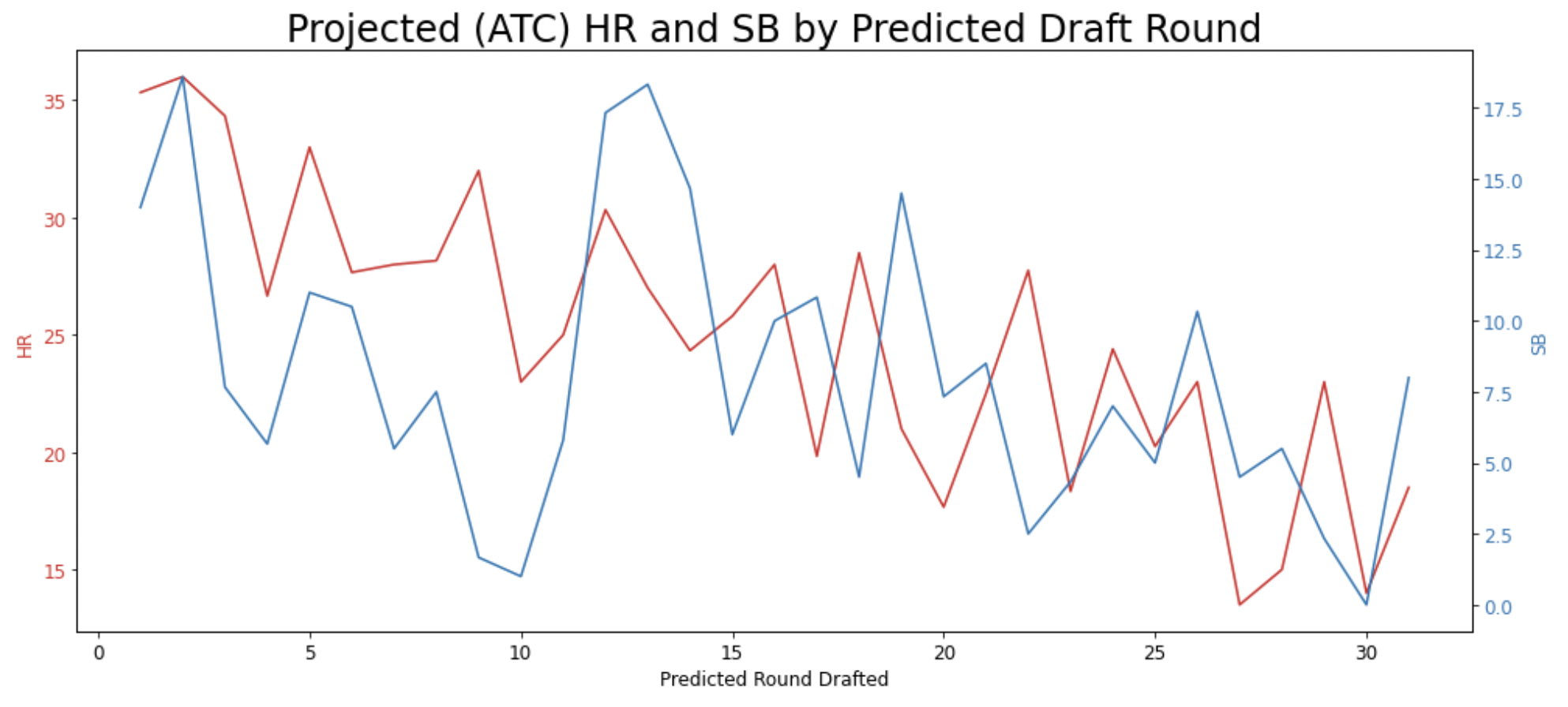Fun with Visualizations: What Round Looks Best For Pitching?
For the first time in my fantasy baseball career, I think I’m going to employ the pocket aces strategy. You can learn more about the strategy by reading Mike Carter’s synopsis on SP Streamer. The idea, however, is simple; take two starting pitchers with your first two picks. In my home league (10-team, 5×5, ESPN, Roto) I’ve been given the 10 spot to draft in a snake draft format. I’ve never employed this strategy because, like many others, the volatility of pitching scares me. The injury risk scares me. I usually want good hitters who steal bases early. But this year I’m going to try something new. Plus, I’m fairly certain I’ll be able to get Max Scherzer and Jacob deGrom. Remember what I said about injury risk? I’m throwing caution to the wind. If something changes and my league drafts differently than I expect, my strategy may change. But, one look at the visual below makes me want to get two pitchers with my first two picks.
Click image to enlarge
I used ATC projections and predicted the round a pitcher would be drafted in based on ADP. To make the image more universal, I used a 12-team setting so that any player with an ADP divided by 12 and rounded to the nearest whole number gives a good prediction of what round they might go in. For example, Zack Wheeler‘s 24.2 ADP places him in the second round (24.2/12=2.02) and Freddy Peralta’s 54.4 ADP places him in the fifth round (54.4/12=4.53). From there I averaged projected ERA and K/9 for all players within each round. You can see that the more you wait, the more your projected ERA increases. Likewise, the more you wait, the more your K/9 decreases. That shouldn’t be a surprise, but this visual shows just how good those first five or six-rounders are.
Let’s address the elephant in the room. What happens if both your starting pitchers go out with injury after three starts? Consider what the results of three appearances from both deGrom and Scherzer could be to start the season. We can do this by using ERA and K/9 projections along with some totally random guessing. Maybe it looks something like this:
| IP | K | ERA | W | WHIP | |
|---|---|---|---|---|---|
| DeGrom | 15 | 21 | 2.40 | 1 | 0.73 |
| Scherzer | 18 | 19 | 2.50 | 1 | 0.61 |
| Total | 33 | 40 | 2.45 | 2 | 0.67 |
This scenario looks pretty good, but I’m not a game-by-game projection artist. I gave DeGrom 15 IPs because maybe they ease him into the season. Scherzer got one more IP per game because it seems scary to try to take the ball away from him on the mound. I used both pitchers’ K/9 projections to determine the likely amount of strikeouts and did the same for WHIP and ERA. They play for the Mets so maybe they each only accumulate one win. This is a somewhat conservative estimate, but could you imagine how thrilled you would be by the end of April/early May to have these numbers? If both pitchers get hurt (hopefully they don’t) and need some time off you would likely still be in great shape from a WHIP and ERA standpoint. In fact, if you punted strikeouts and wins and didn’t start another pitcher the rest of the season, you would likely win the WHIP and ERA category. I don’t recommend that but, you know, it’s possible. From a more realistic standpoint, if you were careful with who you started and didn’t rely on random streaming, you would have really nice ratios to maintain.
On the flip side of this decision is the possibility of taking two hitters. But, the drop-off is not as drastic and I’m confident I can find players later in the draft who I want as starting positional players. Keep in mind this visual calculates an average of stolen bases and home runs for the players in each round. My process doesn’t create equal counts of players per round, so an average is the best way to view stats by round. Take a look:
Click image to enlarge
Certainly, there is a downward trend, but it’s not as drastic as the first visual. In other words, there’s more opportunity to get good hitters later in the draft. For pitchers, it’s not the same. Regardless of how you might feel about where to draft pitchers, you must be able to see the benefits from choosing elite starting pitchers. It is nerve-wracking to think that your best hitter won’t come until pick 20. But, the 20th ranked player by ESPN is Mike Trout. It would be cuckoo-for-cocoa-puffs crazy if Trout were still around by pick 20, but again, it’s possible. Of course, the more granular I get with my draft plan the more likely it is that nine starting pitchers are drafted in the first nine picks. In that case, I’ll take the two best hitters by my rankings. That’s the fun part, isn’t it? You can plan and prep and strategize, but you never really know what’s going to happen until you sit down and start the draft.



Who are the pitchers popping in that 10th round?
I saw that 10th round bump, too.
My first guess was Verlander, who projections love but drafters are shy about. But he’s been going earlier lately.
Rodon?
Yea, good call. That 10th round spot is occupied by only Rodon, so without other pitchers averaging him out, that 11.18 K/9 really stands out